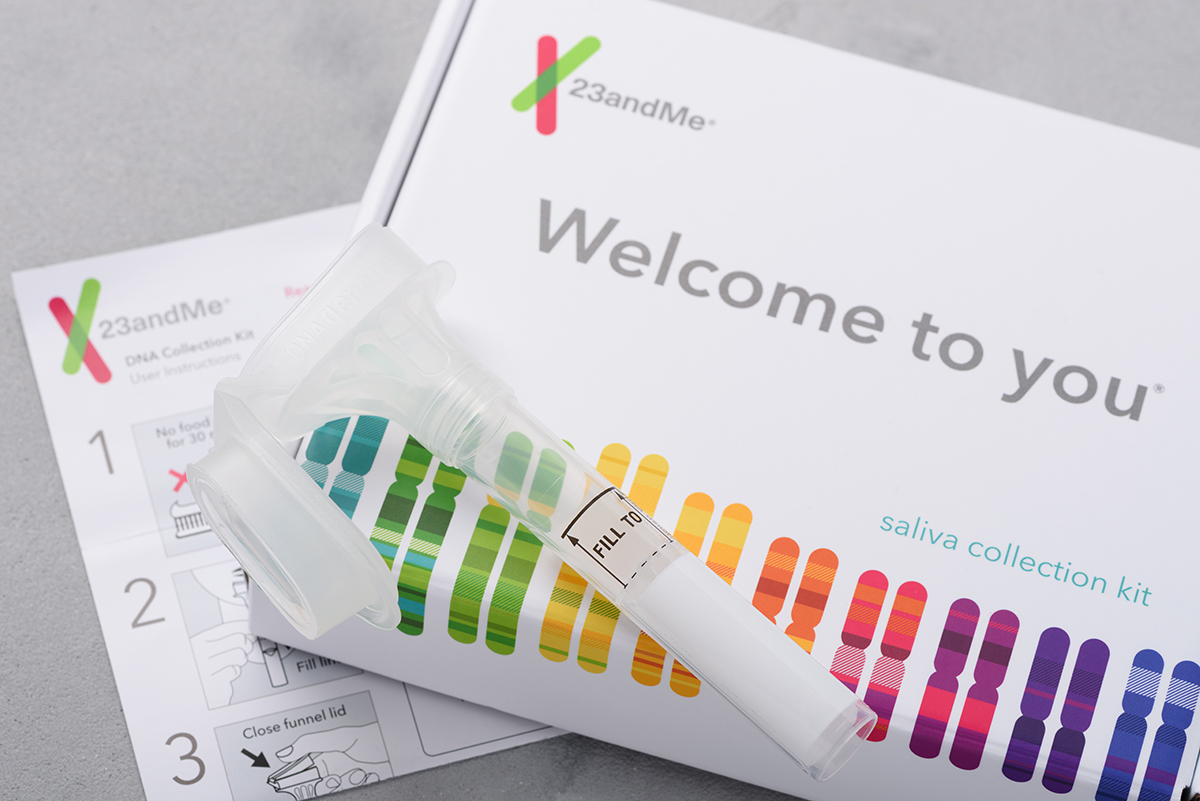What is 23andMe Known For?
Founded in 2006, 23andMe emerged as a trailblazer in consumer genomics, allowing everyday people to access insights about their ancestry and potential health risks through simple at-home DNA tests.
The company’s breakthrough came with its direct-to-consumer model, which made genetic testing more accessible and affordable compared to traditional methods. By offering a comprehensive analysis of one’s genetic profile, 23andMe attracted a diverse customer base eager to learn more about their origins and genetic predispositions.
The Evolution of 23andMe Since Its Inception
23andMe was founded in 2006 in Silicon Valley, San Francisco, by Anne Wojcicki, Linda Avey, and Paul Cusenza as a pioneer in consumer genetic testing. The company aimed to provide individuals with insights into their ancestry and genetic health risks through a simple at-home testing kit. This innovative approach quickly captured the public’s imagination, leveraging personal interest in genetics and health.
By 2007, the company had launched its first direct-to-consumer DNA test, earning a spot on Time magazine’s list of the “Invention of the Year.” [1] This momentum was bolstered by strategic partnerships and significant funding, positioning 23andMe as a leader in the genetic testing market.
However, by 2013, the FDA ordered 23andMe to cease marketing its health-related genetic tests, citing concerns over accuracy and potential misinterpretation by consumers. After complying with the FDA by focusing exclusively on ancestry insights, the company worked diligently to meet regulatory standards, gradually reintroducing health reports by 2015.
23andMe reached another milestone by expanding its database, facilitating groundbreaking research collaborations and drug discovery programs. Nonetheless, concerns persisted over data privacy, customer consent, and transparency, culminating in increased scrutiny by regulators.
In 2023, allegations surrounding data handling practices ignited further controversies, emphasizing privacy breaches and unauthorized data sharing with third parties. Consequently, the erosion of public trust impacted subscriber growth and investor confidence. As of late 2023, these issues remain pivotal in shaping the company’s trajectory and reputation in the genetic testing industry, casting doubt on its ability to regain its former stature.

What Factors Contributed to 23andMe's Potential Downfall?
23andMe, a pioneer in consumer genetic testing, has filed for Chapter 11 bankruptcy and is currently on the hunt for a potential buyer. The company, which was previously valued at more than $3 billion, has seen its stock nosedive to $1.79 per share, a dramatic fall from its high of over $300 per share. [2]
Outlined below are some contributing factors:
Financial Challenges
Despite the initial success of 23andMe in making genetic testing accessible to millions of people, it faced growing financial difficulties. The company grappled with legal and regulatory issues surrounding its management of sensitive genetic information. Heightened scrutiny from both regulators and customers resulted in expensive settlements and persistent privacy concerns, increasing its financial instability.
The bankruptcy filing by 23andMe marks a significant turning point in the company’s history, signaling its struggles within the competitive and highly scrutinized realm of consumer genetic testing. Chapter 11 bankruptcy provides the company with an opportunity to reorganize its operations and finances while seeking ways to address its mounting debts.
For 23andMe, the bankruptcy filing highlighted its need to reassess business strategies, restructure its financial obligations, and potentially streamline its offerings to stay afloat in a challenging market landscape. This step would be aimed at restructuring its financial obligations and allowing the company to regain its footing in the competitive biotech industry.
Regulatory Scrutiny Over Data Practices
The regulatory authorities have closely monitored 23andMe’s data practices due to the sensitive nature of genetic information. This scrutiny stems from the increasing global concerns surrounding genetic privacy and how such data is handled.
The company’s collaboration with pharmaceutical companies for drug discovery has raised questions about the consent process and the protection of consumer data. These concerns have necessitated stringent regulations to ensure that data handling practices comply with established privacy standards, demanding significant adjustments to 23andMe’s operational methodologies.
Loss of Trust and Credibility
The trust in and credibility of 23andMe have been significantly eroded due to their handling of consumer data and privacy. Initially praised for its promise to increase understanding of genetic heritage, 23andMe now faces criticism over how it manages sensitive information.
A major data breach exposed the DNA information of millions, resulting in a decline in consumer confidence, with many questioning the effectiveness of 23andMe’s privacy policies and wondering if the company’s terms of service sufficiently protect users. About 7 millions users’ sensitive genetic and personal data were allegedly leaked, leading to heightened scrutiny over the company’s data protection measures. [3]
Operational Crises
In the wake of growing operational challenges, 23andMe made the difficult decision to lay off 40% of its workforce. [2] This significant reduction in staff was primarily aimed at streamlining operations and cutting costs amid declining share prices and mounting financial pressures.
The layoff affected various departments within the company, reflecting a broad restructuring effort to ensure long-term viability and profitability. The company, previously known for its innovative approach in the genetic testing domain, found itself grappling with ensuring a sustainable business model while navigating industry pressures.
Resignation of Independent Directors
The operational changes at 23andMe were further intensified by the departure of key independent directors. Additionally, CEO Anne Wojcicki stepped down, with Joe Selsavage taking over as interim CEO. [2] These leadership transitions highlighted potential governance and strategic challenges within the company’s management.
What Happens to 23andMe's Genetic Data If It Goes Bankrupt?
In the context of 23andMe filing for bankruptcy on 23rd March, 2025, there are questions arising about the privacy of 14 million genetic data. Typically, in bankruptcy proceedings, a company’s assets can be considered for sale or transfer to satisfy creditors.
However, genetic information is subject to strict regulations and privacy laws, which could impact how it is managed during a bankruptcy. The company would likely be obligated to adhere to its existing privacy policy, which might include clauses preventing the unauthorized sale or distribution of genetic data without the explicit consent of consumers.
In some scenarios, the data might be retained in secure databases until a suitable buyer with appropriate protections in place is found, or it might be destroyed, depending on legal requirements and consumer agreements. Ultimately, the process would involve balancing legal obligations with ethical considerations to safeguard individuals’ privacy and maintain public trust.

Contact Richard West Law Office for legal assistance with your bankruptcy filing to safeguard your business from potential risks.
FAQs
23andMe may seek to preserve customer databases and services during proceedings, but users should keep a backup of their reports and regularly check for updates from the company regarding any changes to service availability or access to existing results.
Yes, 23andMe will offer genetic testing and related services during the bankruptcy process. However, check for official announcements from the company regarding operational changes or potential service disruptions.
Sources:
[1] Wikipedia contributors. (2025, March 26). 23andMe. Wikipedia. https://en.wikipedia.org/wiki/23andMe
[2] Feed. (2025, March 24). 23andMe files for bankruptcy—What went wrong? Once a genetic testing leader, now seeking a buyer amid stoc. The Economic Times. https://economictimes.indiatimes.com/news/international/us/23andme-files-for-bankruptcywhat-went-wrong-once-a-genetic-testing-leader-now-seeking-a-buyer-amid-stock-collapse-and-privacy-concerns/articleshow/
[3] Reporter, G. S. (2024, February 26). Hackers got nearly 7 million people’s data from 23andMe. The firm blamed users in ‘very dumb’ move. The Guardian. https://www.theguardian.com/technology/2024/feb/15/23andme-hack-data-genetic-data-selling-response



